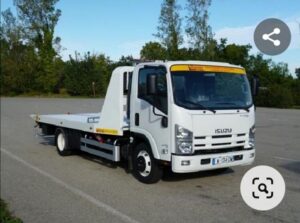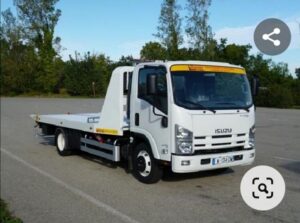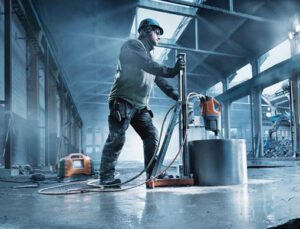Ultimate Surfboard Guide for Every Surfer
Choosing the right surfboard can be the difference between an epic session and a frustrating paddle battle. Whether you’re a complete beginner or a seasoned shredder, understanding how to pick the right board is crucial to progressing your skills. In this surfboard guide, we’ll break down everything you need to know—from board types to shapes, fins, and what works best for your skill level and local conditions. For more tips and surfing essentials, visit Surviving Summer and ride smarter, not harder.
Why the Right Surfboard Matters
Even if your technique is solid, the wrong board can limit your potential. Here’s why choosing the right surfboard matters:
- Performance: The right board enhances maneuverability, control, and speed.
- Progression: Choosing a board that suits your skill level accelerates learning.
- Enjoyment: A well-suited board makes surfing more fun and less frustrating.
Types of Surfboards (H2)
Knowing the different types of surfboards helps you choose what fits your needs best.
1. Soft Tops (H3)
Ideal for beginners. Soft tops are forgiving, buoyant, and safe.
- Great for small waves
- Minimal risk of injury
- Affordable and durable
2. Longboards
Best for smooth cruising and small wave conditions.
- Length: 8-10+ feet
- Stable and easy to paddle
- Ideal for stylish, classic surfing
3. Funboards
A hybrid of shortboards and longboards—perfect for transitioning surfers.
- Length: 6’6” – 8’
- Versatile in wave conditions
- Easier to maneuver than a longboard
4. Shortboards
Designed for high performance and quick maneuvers.
- Best for intermediate to advanced surfers
- Lower volume, less buoyant
- Great for powerful, steep waves
5. Fish Boards
Wide and short with a swallow tail for speed in small waves.
- Excellent paddling power
- Fun for summer waves
- Suits intermediate surfers
6. Guns
Meant for big wave surfing only.
- Extra length and narrow shape
- Built for control at high speeds
- For expert surfers only
Surfboard Shapes and How They Impact Performance
Tail Shapes
- Squash Tail: Great for all-around performance.
- Round Tail: Good for smooth turns.
- Swallow Tail: Adds grip in smaller, mushy waves.
- Pin Tail: Best for big wave control.
Nose Shapes
- Round Nose: More volume and paddle power.
- Pointed Nose: Better control and duck diving.
Rails (Edges)
- Soft Rails: More forgiving, great for beginners.
- Hard Rails: Sharper turns and more speed, ideal for advanced surfers.
Choosing the Right Surfboard for Your Skill Level
Beginners
Go for stability and buoyancy.
- Best pick: Soft top or longboard
- Recommended size: 8’0” and above
- Key focus: Paddling, balance, catching waves
Intermediate Surfers
Time to experiment and transition.
- Best pick: Funboard or fish
- Recommended size: 6’6” – 8’
- Key focus: Turning, wave selection, duck diving
Advanced Surfers
Dial in your style and performance.
- Best pick: Shortboard or performance longboard
- Recommended size: Based on volume-to-weight ratio
- Key focus: Power, technique, aerials, barrels
How to Measure Surfboard Volume (And Why It Matters)
Surfboard volume = length x width x thickness
Measured in liters, volume impacts floatation. A general rule:
- Beginner: 2.0 – 2.5x your body weight (kg) in liters
- Intermediate: 1.8 – 2.2x
- Advanced: 1.5 – 2.0x
Volume is especially important when buying online or custom boards.
Surfboard Construction: What It’s Made Of
Foam + Fiberglass (PU)
Traditional, more flexible, but can ding easily.
Epoxy
Lighter, stronger, and more durable—great for beginners and travel.
Soft Top
Soft, spongy material—ideal for safety and learning.
Understanding Fin Setups
Fins dramatically affect how your board performs.
Single Fin
- Classic feel
- More stability, less maneuverability
- Great for longboards
Twin Fin
- Loose, fast, and flowy
- Works well with fish boards
Thruster (Three Fins)
- Most common setup
- Balanced, stable, good for learning tricks
- Ideal for all-round performance
Quad Fin
- Speedy and powerful
- Useful for big waves or steep drops
Five Fin (Convertible)
- Can be ridden as thruster or quad
- Great versatility
How Wave Type Influences Board Choice
Small, Mushy Waves
- Use: Fish, funboard, longboard
- Focus: Buoyancy and glide
Hollow, Fast Waves
- Use: Shortboard, quad fin
- Focus: Speed and maneuverability
Big Waves
- Use: Gun, thick rails
- Focus: Stability and control
How to Choose Your First Surfboard (Checklist)
- ✅ Prioritize volume (buoyancy)
- ✅ Pick a length of 8’ or more
- ✅ Choose a soft top for safety
- ✅ Go with a single or thruster fin setup
- ✅ Avoid high-performance shortboards
Maintenance Tips to Make Your Surfboard Last
- Rinse with fresh water after every session
- Avoid direct sunlight to prevent delamination
- Store indoors or in a board bag
- Fix dings immediately to avoid water logging
Conclusion
A surfboard isn’t just a piece of gear—it’s your connection to the ocean. Choosing the right one is a personal journey, but with the guidance from this surfboard guide, you’re better equipped to make a choice that matches your goals, wave conditions, and skill level. Whether you’re learning to stand up or chasing barrels, the perfect board is out there for you. Ready to level up? Visit survivingsummer or leave a comment with your favorite board setup!











